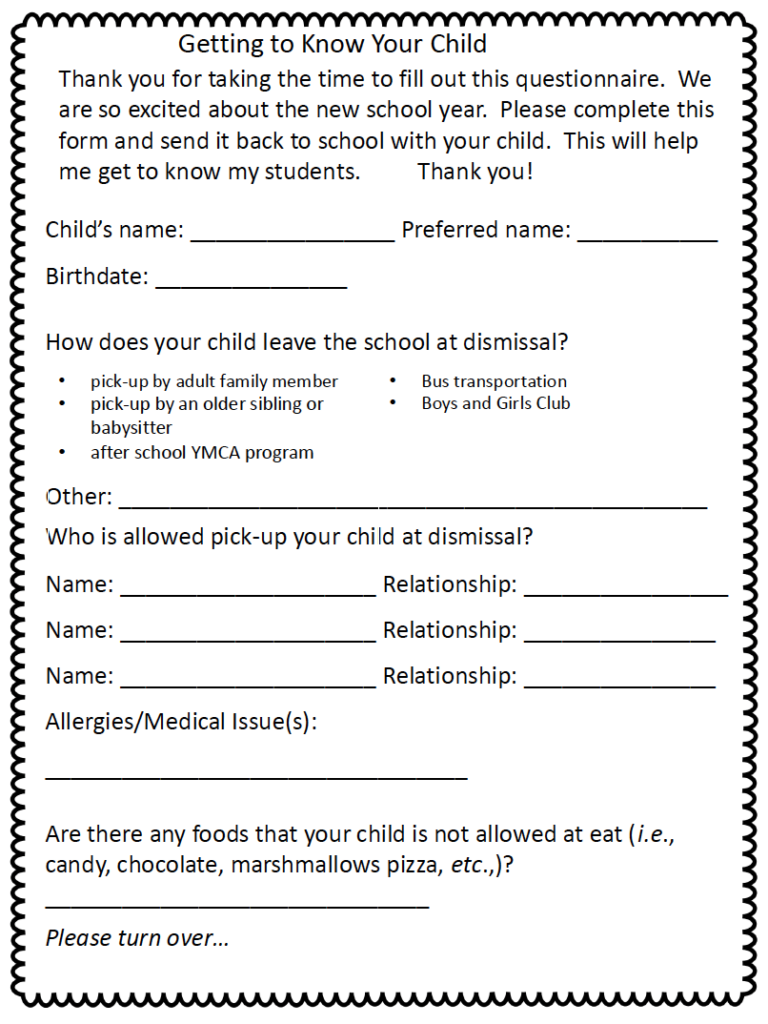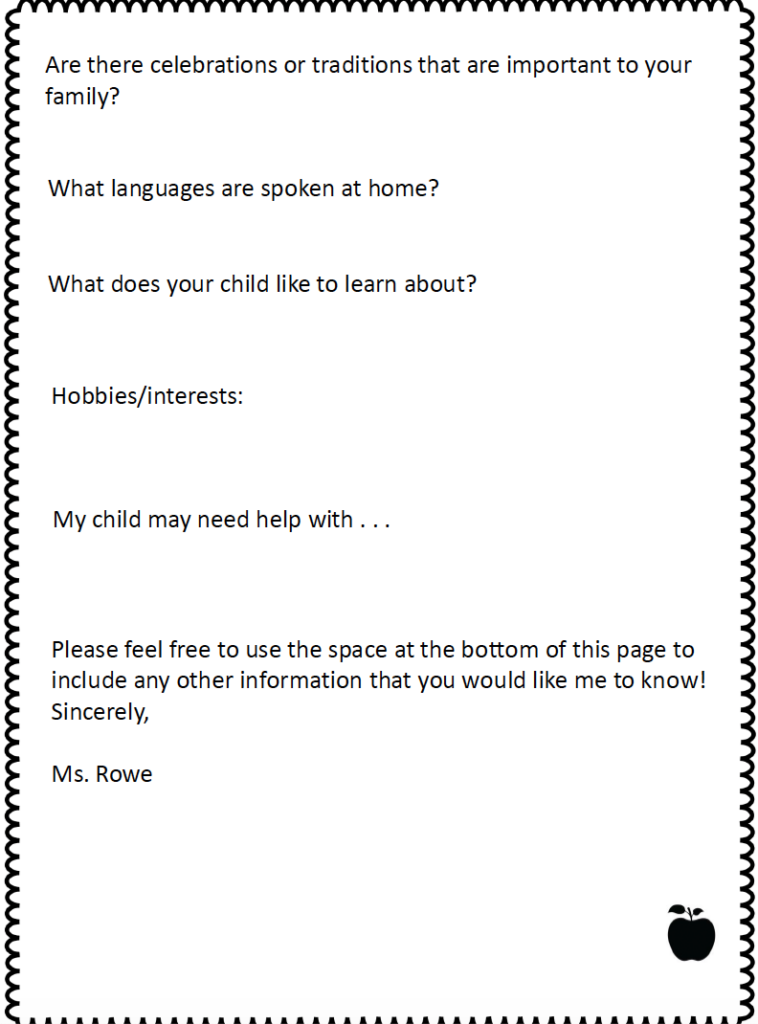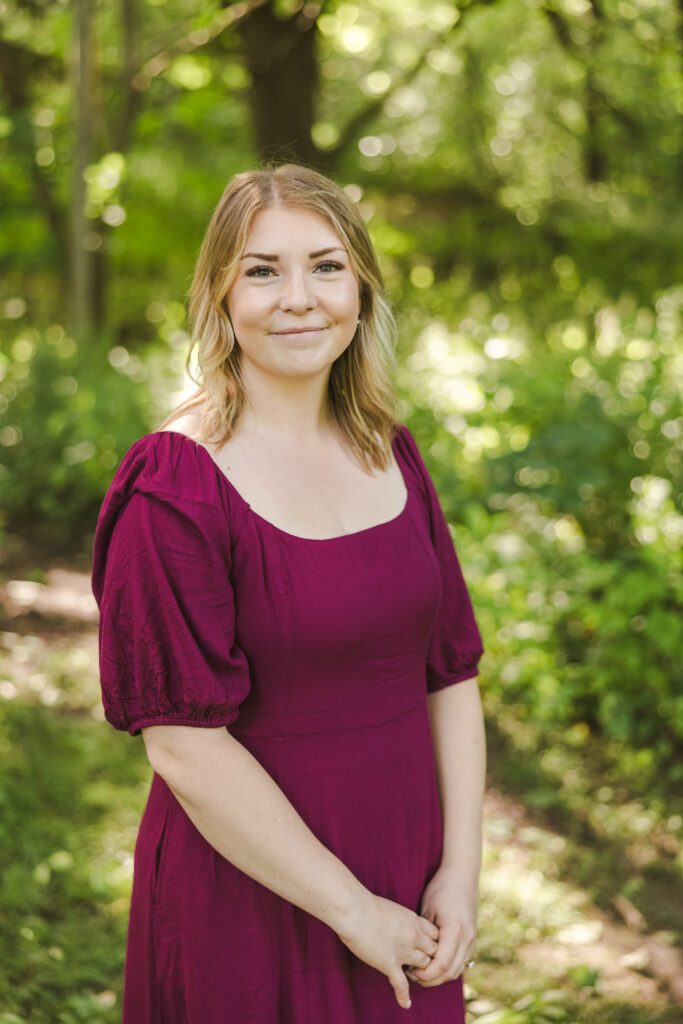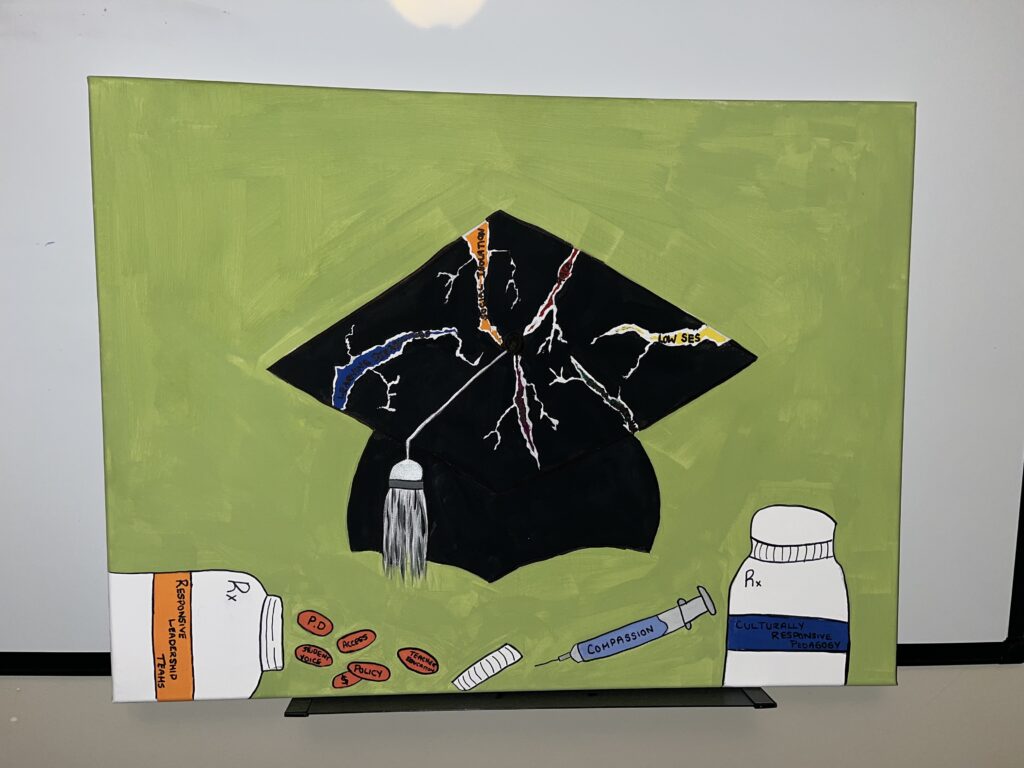
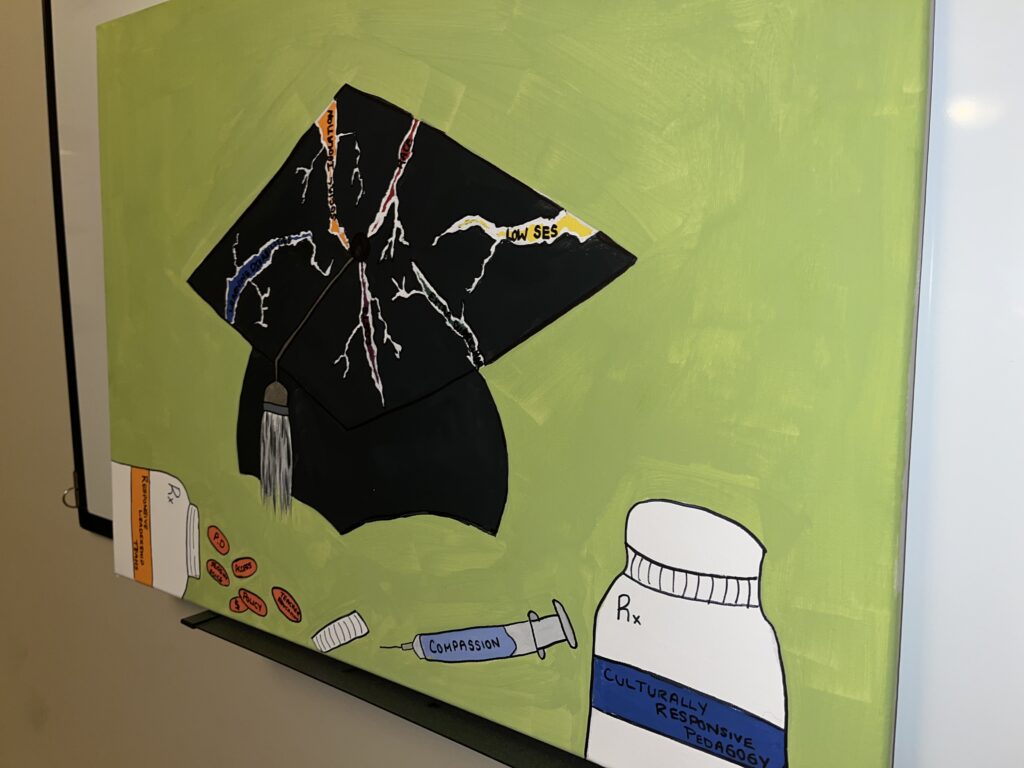
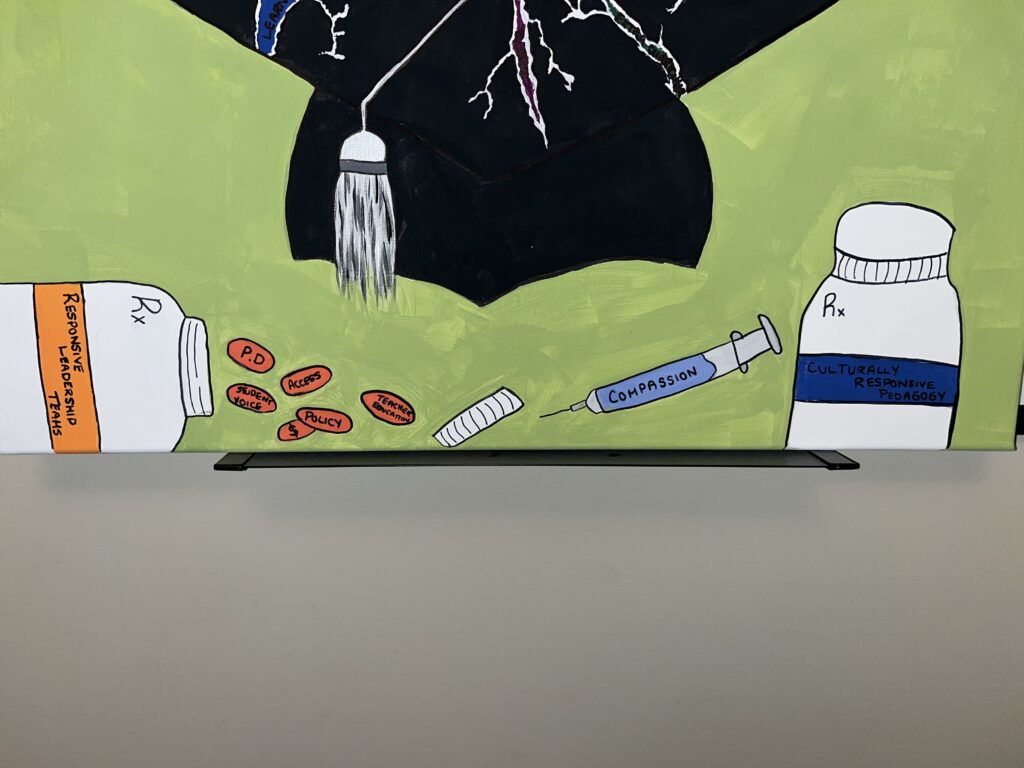
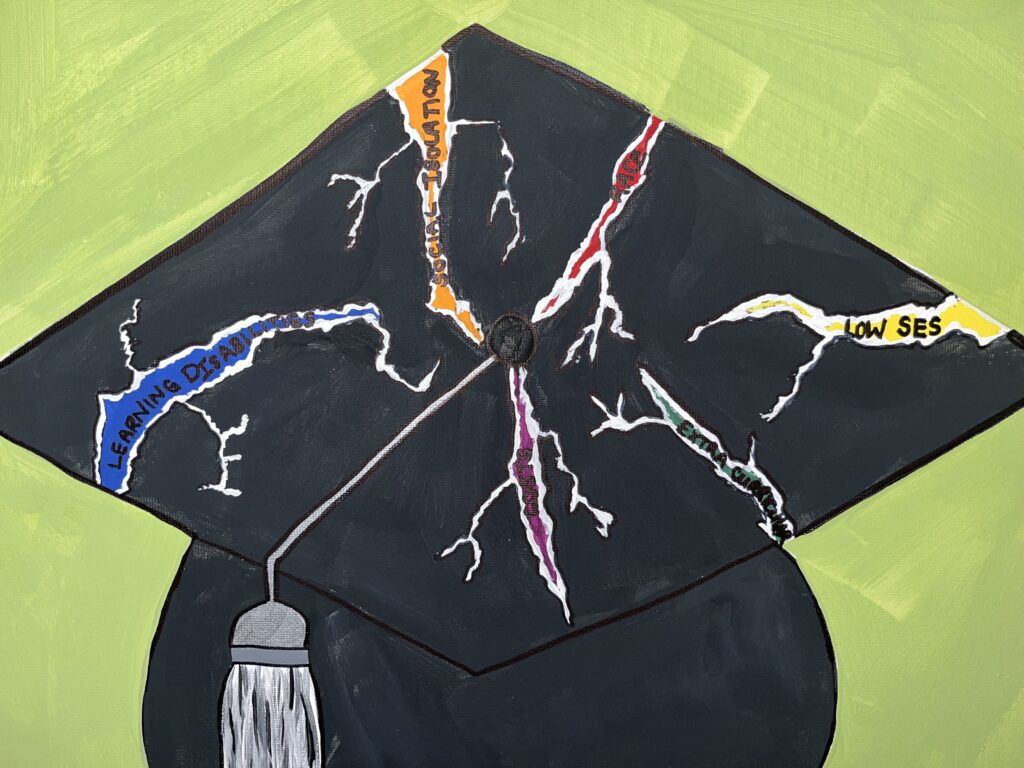
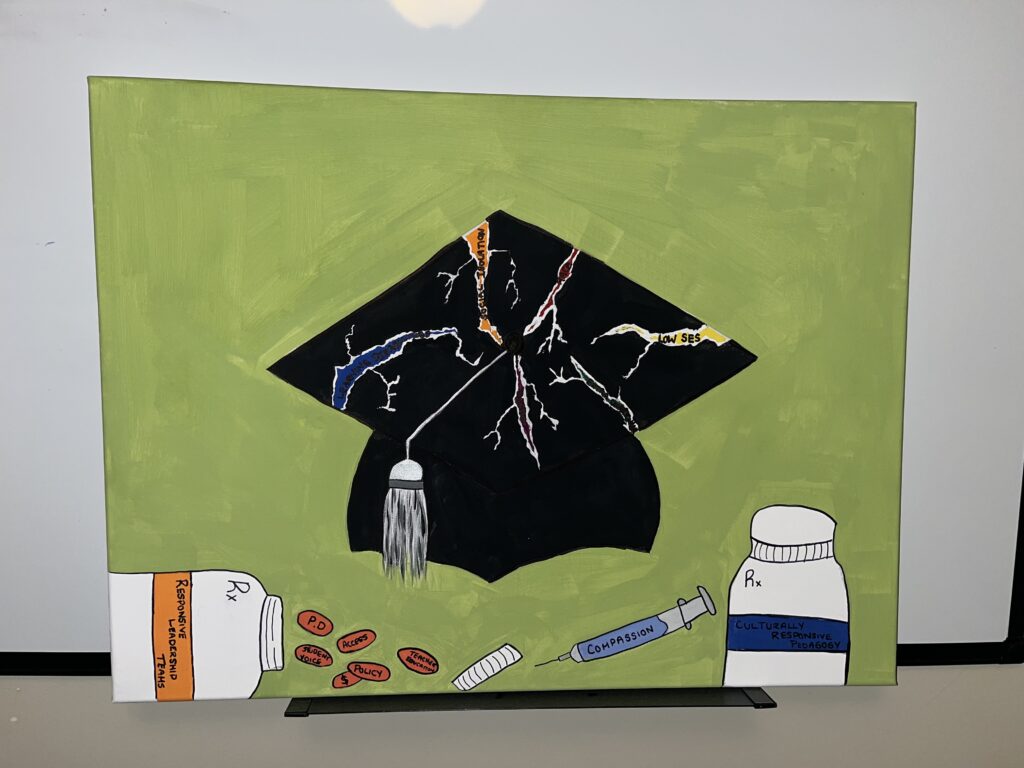
Race, poverty, access to extracurriculars, and learning disabilities are all significant barriers that students face, not only within the public education system but also in every social system society has created. These obstacles contribute to unequal opportunities and outcomes, as individuals from marginalized backgrounds often struggle to access the same resources, support, and opportunities as others. In considering my guiding question, I believe many of the answers are embedded in this artifact. This assignment provides a lens through which we can examine how these systemic barriers shape the experiences of students and how we as educators have tools and resources to change the outcome.
In my painting, I use “medicine” as a symbol for the ways to improve the outcomes of marginalized students. Just as medicine can heal, I believe that intentional, strategic efforts can help address the challenges these students face. Responsive Leadership Teams can advocate for their students by fostering connections with families and community members, understanding who their students are, and acknowledging where they come from. There are various ways to improve conditions for students, such as offering Professional Development that aligns with the specific needs of the school community, creating equal access to extracurriculars, and revising school or board policies that don’t align with the community’s climate. Allowing student voices to influence decisions is also crucial. To make real change, we need to be culturally responsive, approaching these efforts with compassion and vulnerability. Understanding culture, ethnicity, and race deeply influences how we handle situations and the perspectives we bring to learning, ensuring that we approach each student’s needs holistically and thoughtfully.
My view on leadership evolved throughout this course, and I began to see myself as a small leader influencing a tiny community. While I am one of the leaders in my classroom, I also recognize that I have 20 other 6-year-old leaders to learn from and listen to. Each leader in my room brings their own thoughts, feelings, backgrounds, and stories, and it’s my responsibility to create an environment where all of their voices are heard and eliminate any barriers they may face, ensuring every student has the support they need to thrive.
So what does this look like? In my school, other teachers and I have been offering extracurriculars at recess and lunch times instead of after school. With the help of the secretaries and a few students, we’ve started a “community closet” where unclaimed items from the lost and found become “extras” for students in need. I’ve created a “Getting to Know Your Child” document that I share with families at the beginning of the year so they can share as much (or as little) as they want with me. Context is everything! I’ve also partnered with our cultural club at the school to promote a bigger emphasis on reconciliation and sought out Indigenous leaders in our community to share their knowledge with the school.
